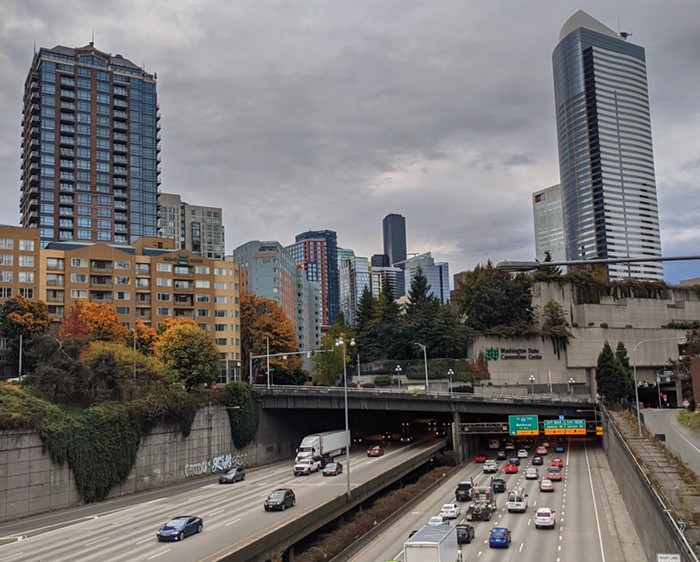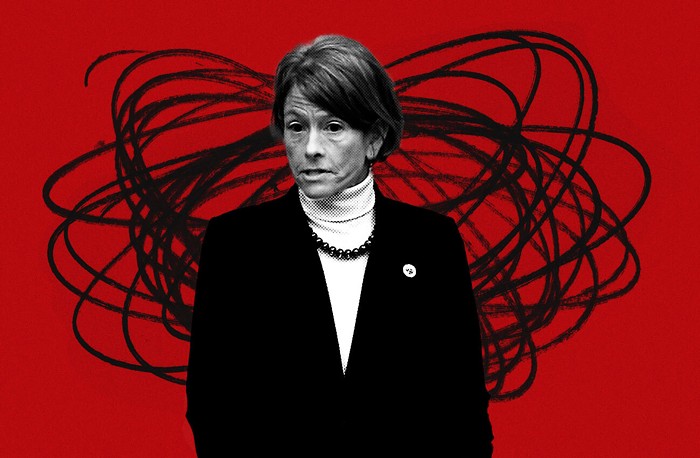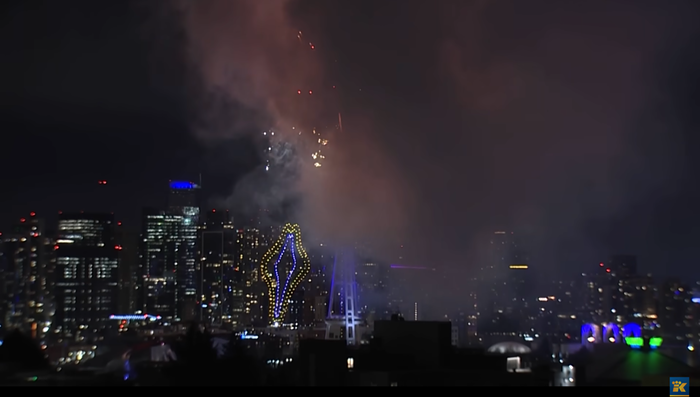
In my previous column I explained how American expectations for public transit have been on a decades-long downward spiral from the Great Society rapid transit systems of BART, MARTA, and the Washington, DC Metro system to the milquetoast light rail, streetcar, and “rapid” bus systems we struggle to build today. In short, we’re now paying far more money for far less transit than we did only a few decades ago.
One of my biggest pet peeves is when people complain about stuff without offering solutions, so in that spirit, this article will focus on things we can do beyond ST3 to ensure the Seattle metro area builds the world-class transit system it needs and deserves. A coalition of the Transit Riders Union, Seattle Subway, and The Urbanist recently published a list of priorities for ST3, and these suggestions are all worthy of consideration. Building upon that, here are some additional ideas to improve our regional rail system.
What BART, MARTA, and the DC Metro systems have in common is that they’re all heavy rail subway systems. Sound Transit’s Link system is light rail. The technical differences between heavy rail and light rail involve a lot of transit geek pedantry, but fundamentally, it’s not about the physical weight of the rails or the trains, but the overall passenger capacity of the system. This is dictated by how big the trains are, how fast they run, and how frequently they run. It’s also helpful to think of it as a spectrum rather than distinct categories; Portland’s MAX system would fall sharply toward the “light” end of the spectrum, while the Bay Area’s BART system would be at the “heavy” end. (For those who are actually interested in such minutiae, I wrote an article years ago that attempts to explain it all.)
Our Link system currently falls somewhere in the middle of that spectrum, but to ensure the best value for our tax money and leave behind a better region for future generations we should be doing more to push it toward the heavy side. This means building trains that can carry more people, and increasing the speed and frequency at which they run.
American transit agencies are notoriously hidebound and parochial, often ignoring proven best practices in other countries and insisting on reinventing the wheel with each modest innovation. A perfect illustration of this mentality involves a relatively easy step Sound Transit could take to increase capacity, a practice that is already commonplace throughout the world: open gangways. In their current configuration, about 20% of the length of each Link train is wasted by couplings and empty operator cabs between cars. Sound Transit insists that this configuration is needed for “operational flexibility,” but that excuse rings hollow when you consider how many other transit agencies throughout the world manage just fine with open gangways. Future maintenance facilities are being planned as part of ST3 and they should be designed with open gangway trains in mind, so the option of shifting to open gangway trains remains open in the future. The correct time to make that executive decision is now. Stop making excuses, Sound Transit. Just make it work.
Shortsighted design decisions made early in the planning of a transit system can have repercussions that last for decades. A century ago, New York’s first subway lines—today’s numbered routes—were built with small trains that were only 300 feet long and 8’-6” wide, similar dimensions as today’s 3-car Link trains. Newer lines built by competing companies—today’s lettered routes—were built for trains that are 10 feet wide and 600 feet long, the same dimensions adopted by modern MARTA and DC Metro trains. (BART trains can be over 700 feet long.) Stations on the older lines were eventually lengthened to handle 500-foot trains, but even now, it’s safe to assume that straphangers packed like sardines onto the 4, 5, and 6 trains under Lexington Avenue would greatly prefer riding the larger trains of the lettered routes if it was an option. New York’s MTA is now spending a vast fortune on a new Second Avenue Subway to relieve overcrowding on the antiquated and overstressed Lexington Avenue lines.
Unfortunately, it’s probably too late to consider larger trains for Link light rail. Modifying existing facilities to accommodate them wouldn’t be impossible, but it would be a substantial undertaking. However, if Sound Transit really wanted to be proactive, they would design new facilities in such a way that doesn’t preclude the possibility of larger trains in the future if needed. If Sound Transit designs ST3 merely for the needs of today, it will be obsolete before it’s even finished. ST3 and future expansions need to be designed for the needs of the next century, not the last one.
Link’s biggest hindrance, though, isn’t the size of the trains but their speed and frequency, thanks to grade-running segments in SoDo and the Rainier Valley. In these areas, trains must stop at traffic signals, operate at slower speeds, and endure conflicts with surface traffic. (Link trains also face similar issues in the downtown tunnel, but this will be resolved when buses get evicted next year.) To their credit, Sound Transit has apparently learned their lesson and decided that all new lines built as part of ST3 and beyond will be entirely grade-separated. But that still leaves us with grade-running segments in SoDo, the Rainier Valley, and one currently under construction in Bellevue. These will continue to be the weakest links of our transit network; even minor disruptions in these areas will continue to have ripple effects throughout the rest of the system, no matter how well future segments are designed. Long-term planning for Link must include the eventual conversion of these segments to fully grade-separated viaducts or subways.
On a similar note, I echo the sentiments expressed by The Urbanist, TRU, and Seattle Subway: Scrap this asinine idea of running the Ballard line on a drawbridge. Down in Portland, a rickety drawbridge across the Willamette River is the source of disruptions that routinely cripple their MAX light rail system. Only a tunnel or a tall bridge to Ballard will ensure reliable Link service to that area of the city.
If Sound Transit made no other changes, the mere act of fully grade-separating the Link system would allow for faster trains, more frequent trains, and far more reliable service. But it would also allow for the adoption of automation technology that Vancouver figured out thirty years ago. Fully-automated trains allow for even more frequent service—Vancouver’s SkyTrain system is capable of running a train every hundred seconds in each direction—and more flexible responses to changing conditions. A Mariners game goes into extra innings and finally lets out at 11 PM? Sound Transit could instantly put additional trains into service to handle the crowd by punching a few keystrokes on a computer. No need to call in additional operators and pay them overtime.
Even if we did all the above, it still likely wouldn’t be enough to truly get us away from automobile dependency. If our regional population keeps growing by 3% per year, we’ll have over 8 million people living here by the time Link light rail to Issaquah opens in 2040. That’s almost as big as the Chicago metro area today, and that region has had over a century to build out an extensive network of rapid transit and commuter rail lines. (And despite all that, many parts of Chicagoland still remain auto-dependent and traffic-choked.)
Light rail works best for distances of less than about 15 miles. New York’s longest subway line runs 32 miles from Inwood to Far Rockaway, and that’s mostly on express tracks with limited stops. Link light rail from Everett to West Seattle will cover the same distance, and the line from Tacoma to Ballard will be ten miles longer. Does Sound Transit really think those trains won’t be at crush capacity before they even arrive at Federal Way? Sucks to be you, Columbia City.
For a taste of Link’s likely future, ride the Blue Line in Los Angeles, the 22-mile light rail line that runs from downtown LA to Long Beach. Opened in 1990, the line is already bursting at the seams, even with parallel Bus Rapid Transit (BRT) service on the 110 freeway. To avoid that fate, we’ll need to bring additional options to the table.
One option that’s been gaining traction elsewhere lately: Regional Express Rail (RER) service, a hybrid approach that combines the fast, frequent service of electrified rapid transit with the large, longer-distance trains of commuter rail. First developed in Paris, regional rail systems with RER characteristics can be found in Sydney, Perth, and London. Toronto is in the process of converting its diesel-powered commuter rail network to RER, and New York’s Regional Plan Association has proposed similar upgrades to that region’s balkanized commuter rail system. Here in the Northwest, where the cost of electricity is comparatively peanuts, this seems like a no-brainer. Electric trains offer far superior acceleration than diesel, and with electric locomotives, our existing Sounder railcars could easily be adapted for RER service.
Momentum is building for a high-speed rail line between Vancouver and Eugene. A dedicated four-track mainline between Everett and Tacoma, with express tracks for high-speed trains and local tracks for RER service, would compliment Link service along the I-5 corridor while avoiding conflicts with BNSF freight trains. That conversation needs to be part of any high-speed rail study, and it needs to begin now.
None of this requires unproven, pie-in-the-sky technology like Hyperloop or autonomous vehicles; the technical solutions we need are already at our disposal. What we’re missing is the political will to implement them. We need to be proactive rather than reactive: The outer reaches of New York’s early subway lines were built through farmland in what is now Queens and the Bronx; their planners knew that dense, vibrant neighborhoods would naturally develop around those new transit nodes in time. Now we do it exactly backwards: We wait decades for transit demand to sufficiently grow (usually at the point where traffic is so bad that we’re finally willing to consider other options), and then try to jury-rig a bare-bones system to fit. And then, in defiance of all logic, we artificially limit the amount of density that occurs at the transit nodes we’ve just built at great expense. To paraphrase former Vancouver planner Brent Toderian, the way we currently plan regional transit is like determining the feasibility of a bridge by counting the number of people who swim across the river.
A modest proposal: Let’s rediscover our appetite for big ideas, and design our regional transit system in such a way that it becomes the natural first choice for travel, rather than a last-resort form of social welfare for those who can’t afford to own a car.
David Cole, AIA, is an architect in Seattle.


















